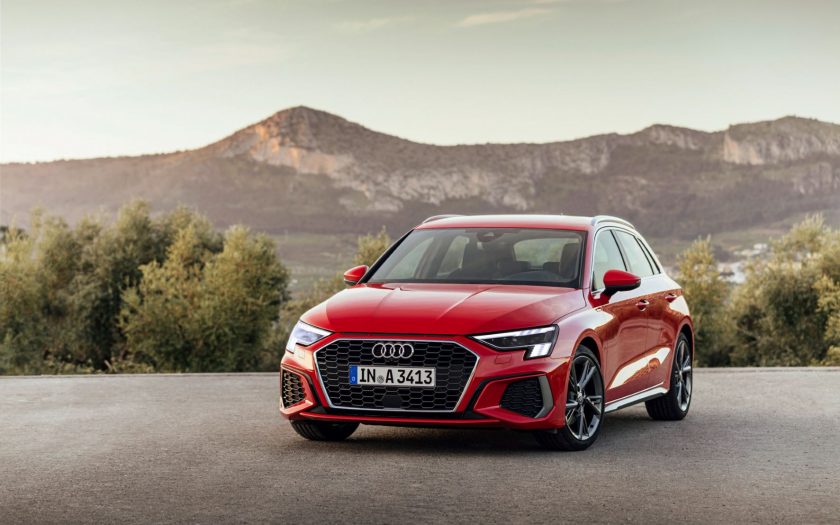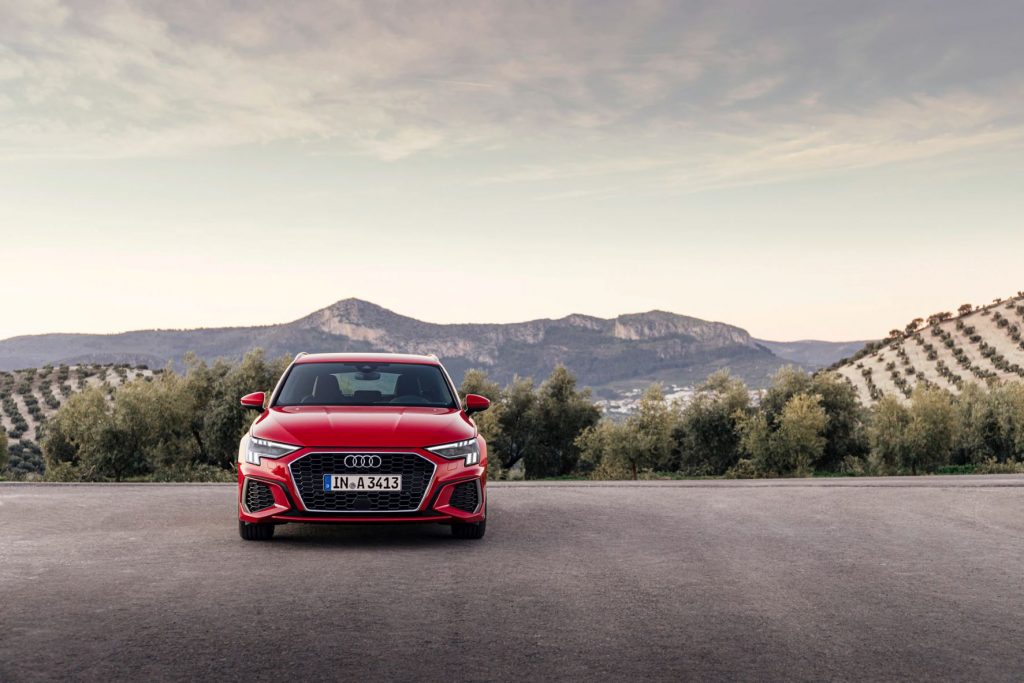Chris Riley tests the 2022 Audi A3 35 TFSI Sportback with pricing, specs, ride and handling, safety, verdict and everything the over-50 driver needs to know.
Summary: Chris concludes that for the over-50s the A3 is too low, too cramped and too difficult to get in and out of. And too pricey for what it is.
2022 Audi A3 35 TFSI Sportback
Pricing: $46,900 (plus on road costs), metallic paint $1250
Warranty: Five-years, unlimited km
Safety: 5-star ANCAP (tested 2020, expires 2026)
Engine: 1.5-litre mild hybrid four-cylinder petrol engine
Power: 110kW @ 6000rpm
Torque: 250Nm @ 3500rpm
Transmission: 7-speed dual clutch automatic, front-wheel drive
Body: 4350mm (long); 1816mm (wide); 1466mm (high)
Country of origin: Germany
Weight: 1875kg
Towing capacity: 1600kg
Wheels: 18-inch alloy
Tyres: 225/40R18
Ground clearance: 161mm
Turning circle: 10.7m
Fuel tank: 50 litres
Thirst: 5.0L/100km (unleaded 95 RON)
Consumption on test: not stated
seniordriveraus consumption on test: not tested
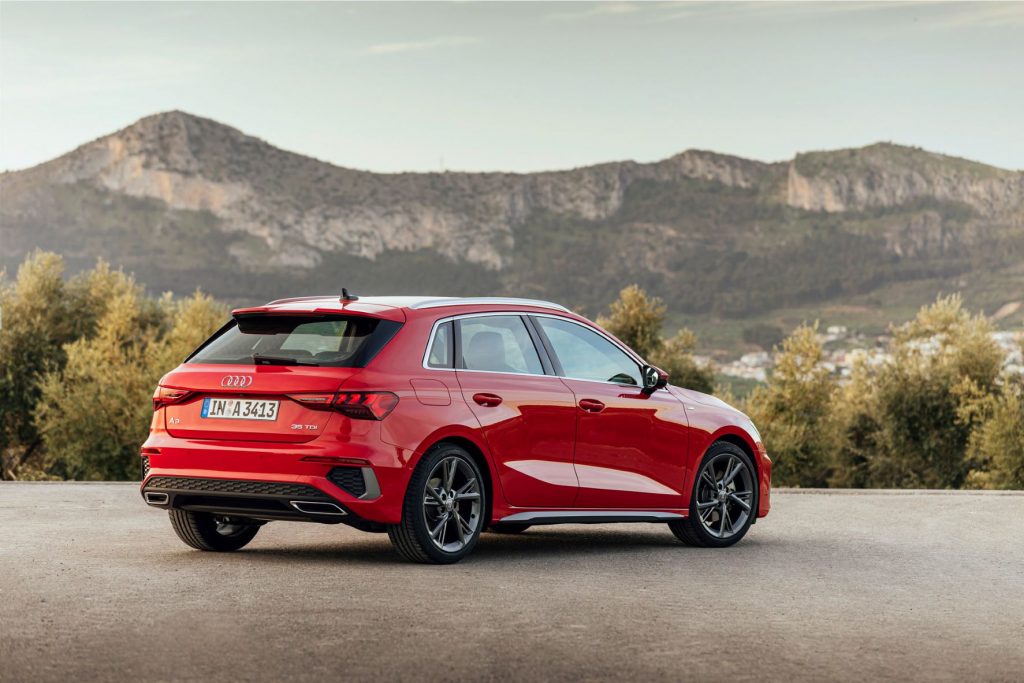
[review]
We got off to a bad start with the Audi A3 after a warning light showed the battery in the electronic key needed replacing.
As our test vehicle was supplied with just the one key, it was a job that we couldn’t afford to put off.
You’d think the manual, one of several items of paperwork in the glovebox, would specify exactly what kind of battery was required… but alas, no.
Either way it meant prising open the key, being careful not to damage the casing, which was not an easy feat, and when we finally managed to pop the cover, it fell between the centre console and driver’s seat.
To give this some context, it all happened right as it started to rain, in a shopping centre carpark, five minutes after we had headed off for a weekend away. Ouch!
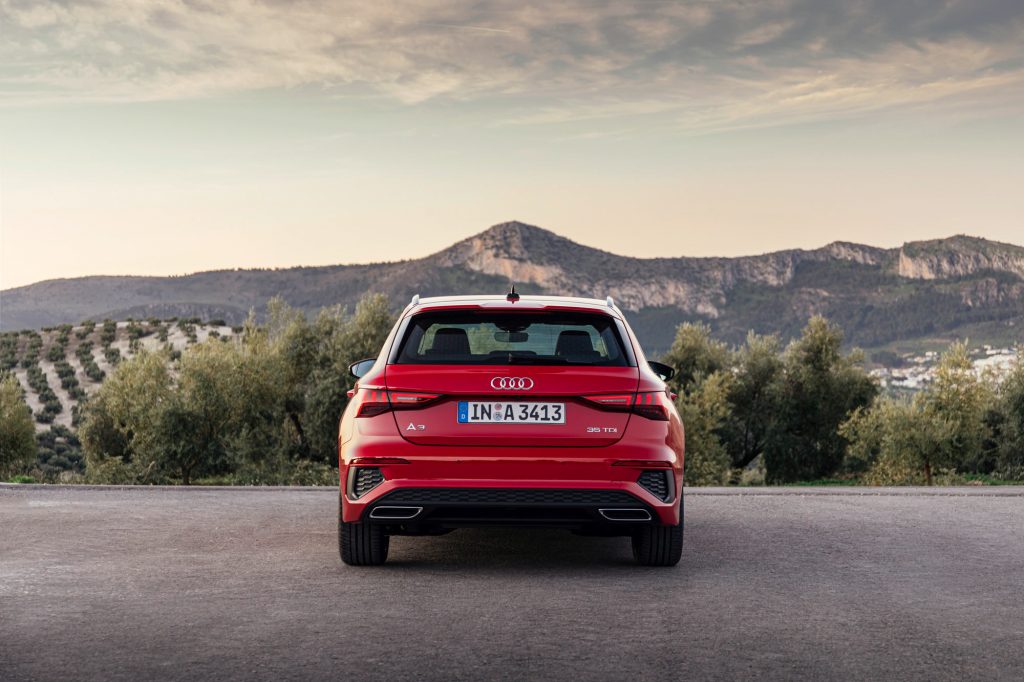
What’s it cost?
Keeping track of the diverse Audi range requires a computer, spreadsheet and strong work ethic.
Biggest selling models are now the SUVs – the Q3, Q5, Q7 and Q2 – in that order (at least that’s how it panned out in 2021).
Hatchbacks (or ‘Sportbacks’ as Audi refers to them) have become a bit passe. Not so long ago a hatch was considered a very practical option, sporty even if you popped for a hot one.
Confusing the issue, Audi also offers Sportback versions of its SUVs, which generally means a sloping, less convenient rear roofline.
The cheapest Audi as we speak is the A1 Sportback priced from $33,800 plus on-roads.
Entry point for the once entry A3 line, is $46,900. That gets you the A3 35 TFSI Sportback (subject of our test), replacing the previous 1.0-litre three-cylinder A3 30.
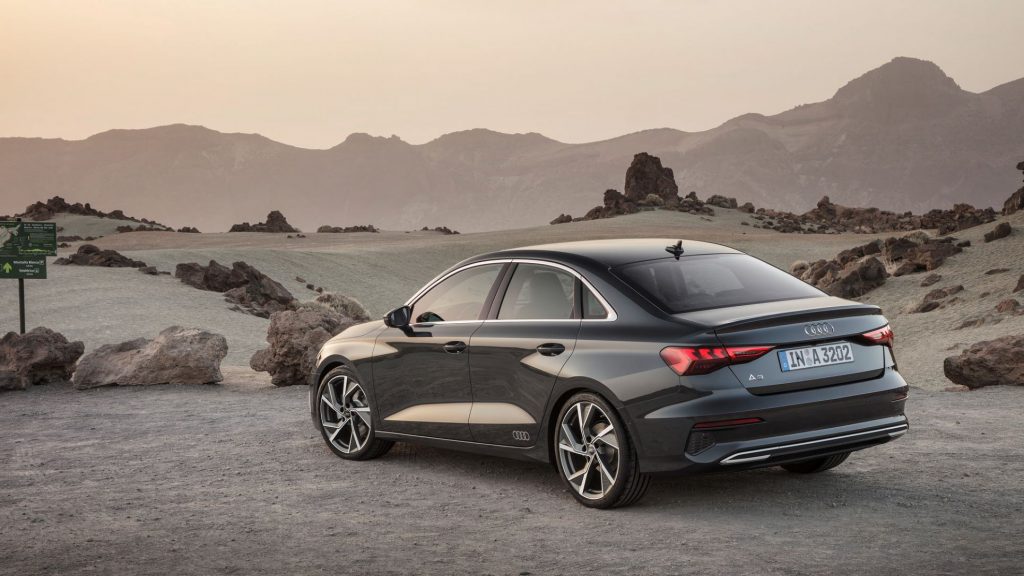
The sedan is 15cm longer and costs $2500 more.
Our test vehicle looked very German, finished in Manhattan grey with a black interior.
It was fitted with a number of options, including the optional $370 dark aluminium inlays, $650 power tailgate, metallic paint $1250 and the $2600 Comfort Package.
The latter adds an auto-dimming rear view mirror, power folding exterior mirrors, heated power-adjust front seats with electric lumbar adjustment, adaptive cruise control with stop and go, traffic jam assist and emergency assist.
Subtract $260 for Audi phone box light (aka Qi wireless phone charging) which is not available due to the global shortage, brings the total price of the car as tested to $51,510 plus on-roads.
Also missing because of supply problems is cross traffic assist rear, lane change warning with exit warning and park assist which helps to steer the vehicle into a parallel or perpendicular parking space.
For an Audi (we haven’t driven one for quite a while) the A3 looks the part but definitely feels downmarket, with a plastic-looking grille, generic door trim and the use of some cheap plastic surfaces inside.
But the Audi DNA is certainly there, with sporty ride and handling, and the bonus of exceptional fuel economy.
For something fancier, you need to shell out considerably more for the S line, S3 or RS3 grade.
Standard kit includes 18-inch alloys, leather appointed trim and dual-zone climate air, three-spoke leather steering wheel with multifunction plus and shift paddles, LED headlights, auto lights and wipers and heated exterior mirrors.
Infotainment is built around six-speaker audio and a big, bright, responsive 10.1-inch touchscreen that is inset in the dash, rather than freestanding as it was before (and is the norm).
The system includes voice control, built-in navigation, DAB+ digital radio, wired Android Auto and wireless Apple CarPlay connectivity and two USB outlets and a 12v outlet in the front console for charging and connectivity.
You also get Audi connect plus functionality, with online traffic, weather conditions, fuel prices, parking information and Google satellite map overlay, together with additional features available through the myAudi app – like remote lock/unlock, service request and emergency call thanks to an embedded SIM.
Five-star safety comprises seven airbags including a centre bag, Audi pre-sense city with auto emergency braking (including pedestrian and cyclist detection), side assist, lane assist, cruise control with speed limiter, park assist with rear view camera and tyre pressure indicator.
A3 is covered by a 5-year warranty with service due every 15,000km or 12 months, with a five-year prepaid service plan available priced at $2250.
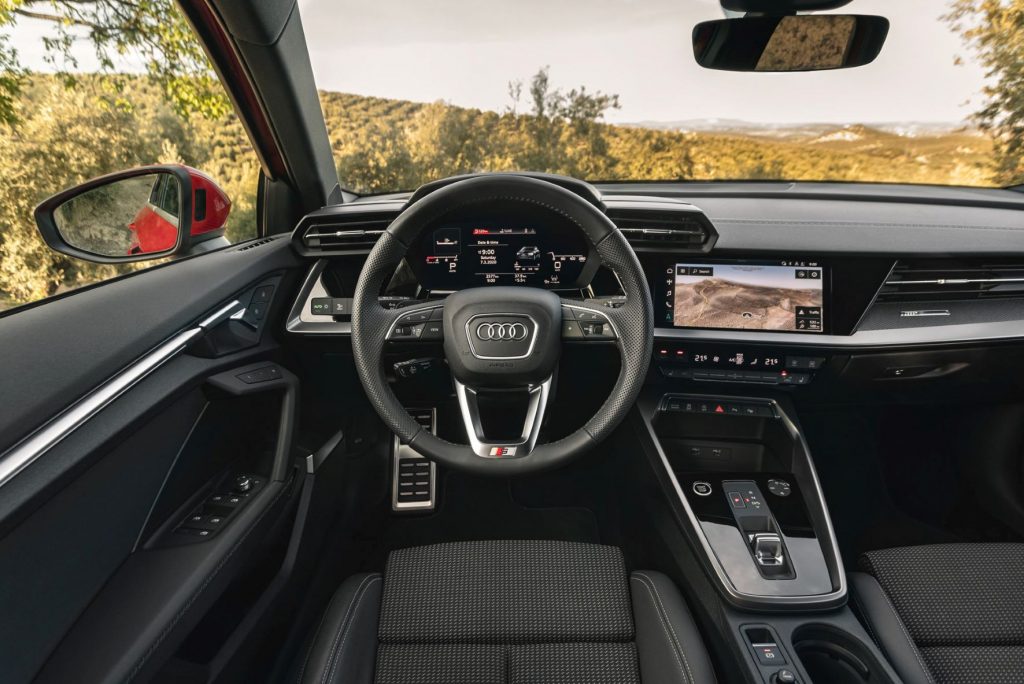
What’s it go like?
Introduced earlier this year, the current A3 35 TFSI features a new 1.5-litre four-cylinder engine with Cylinder On Demand (COD) and a mild-hybrid system (MHEV) under its bonnet.
The 1.5-litre powertrain offers the same 110kW and 250Nm of torque as its 1.4-litre predecessor, but despite the 100cc increase in displacement provides better fuel economy than before.
A belt alternator starter (BAS) is installed on the engine, feeding a 48-volt electrical system that integrates a compact lithium-ion battery located under the driver’s seat.
It provides a 0.4L/100km improvement, bringing fuel consumption for the Sportback down to a claimed 5.0L/100km (4.9 L/100km for the sedan).
CO2 emissions for the Sportback are 114g/km.
Drive is to the front wheels via a 7-speed S-tronic dual clutch transmission, with auto start-stop, paddle shifters for keen drivers and a sportier S mode if you’re feeling lazy.
The actual transmission lever has been replaced by a toggle which you pinch between your thumb and forefinger to change between forward and reverse, with two pull back for S mode.
It’s a better, easier-to-use solution than the rotary dial offered by some and frees up space on the console.
Not so the circular, touch-activated, console-mounted volume control. A standard knob would have sufficed.
It’s fairly well-behaved for a twin clutch transmission, but doesn’t like chop and change – or plonking it off the line.
The dash from 0-100km/h takes 8.4 seconds and it has a top speed of 224km/h.
Runflats have been replaced by a tyre repair kit.
The 18-inch wheels are shod with Pirelli P7 Cinturato rubber which deliver great roll-on, with hardly any input from the throttle required most of the time.
In fact, the car appears to use hardly any fuel because of the largish 50-litre tank and low rate of consumption, helped along by cylinder deactivation and a free-wheeling transmission.
The trade-off is tyre noise, particularly at motorway speeds.
The sedan (we were supposed to get the sedan) is just over 15cm longer but all other dimensions are identical.
Ride and handling are sporty, firm and precise, with good communication about what’s going on underneath the car through the steering wheel.
The basics are spot on.
But the layout of the dash and instruments is overly complex and confusing.
It can leave the driver not knowing which way to turn or which button to press, with dull lettering making the job of deciphering functions harder than it should be, especially when the car is in motion.
Each time you stop the car, you have to remember to push the separate park button, push the off switch and from time to time apply the handbrake (sometimes it engages automatically, sometimes it doesn’t).
Forget the handbrake and it has a tendency to lurch forward.
You can reduce the busyness of the instrument cluster with two basic configurations available and the ability to dictate what appears between the dials.
Navigation can be displayed right between the dials, a nice blingy, hi-tech touch once reserved for high-end models.
But here’s a tip, turn off Google Earth and use the basic graphics or the screen will become so busy and difficult to follow it’s apt to drive you nuts.
And while the map can be displayed between the two dials, the current speed limit doesn’t come over from the touchscreen.
What we like
- Sporty
- Communicative chassis
- Doesn’t use much fuel
- Rear air outlets
- Nice touchscreen
What we don’t like
- Hard to get in and out
- Disorganised dash
- No wireless charging
- Adaptive cruise not standard
- Head-up display not standard
- Limited rear legroom
- Small boot
What over-50s need to know
That’s a no for the senior drivers.
The A3 sits too low, is too cramped and too difficult to get in and out of.
And it’s too pricey for what it is.
The dynamics are sporty, but many features that should be standard are options such as an auto-dimming rear view mirror and adaptive cruise control.
Even at $50K by the time you put the A3 on the road, you could find yourself paying more than you bargained for.
And, like many manufacturers, Audi has been affected by the global supply shortage, so some inclusions have become exclusions – so be sure to check the fine print.
seniordriver comments
Audi has always delivered a premium motoring experience and even the smaller (and therefore more affordable) cars in the range have punched above their weight.
Unfortunately, the luxury has to be balanced against the entry price, and in the case of the A3, that’s substantial.
We asked Audi if (or when) items deleted due to supply issues might be reinstated, and are still awaiting a response. Having to forego essential safety items such as rear cross traffic assist, lane change warning with exit warning and (perhaps less essential) park assist will inevitably sway some purchase decisions. And we are almost certain such missing items will not be able to be retrofitted. And we wonder if they should have an impact on the ANCAP five-star rating. As always, we suggest you talk to the dealer about these issues, and whether the car you are ordering will be missing any features, and if there will be a corresponding reduction in price.
We at seniordriveraus have not had the opportunity to test the A3, so we were quite surprised to read Chris’s assessment that some fittings feel a little downmarket.
The slightly larger engine, along with its additional cylinder hasn’t changed the power and torque figures, but improves an already-impressive fuel economy figure. It also means the A3 betters the fuel economy claimed by its most obvious competitors, the BMW 1 Series and Mercedes-Benz A-Class (and the slightly left-field alternative that we’d include on the shopping list, the Volkswagen Golf 110 TSI R-Line).
We continue to argue for simple, user-friendly controls, but the circular, touch-activated, console-mounted volume control in the A3 is typical of so many new cars in being impractical, difficult to use and unnecessarily fiddly. The same applies to the dash layout.
The replacement of run flat tyres is probably welcome (the ride should be better and quieter and replacements will be less expensive), but having to rely on a tyre repair kit is an issue. Chris still considers tyre noise to be higher than desirable.
